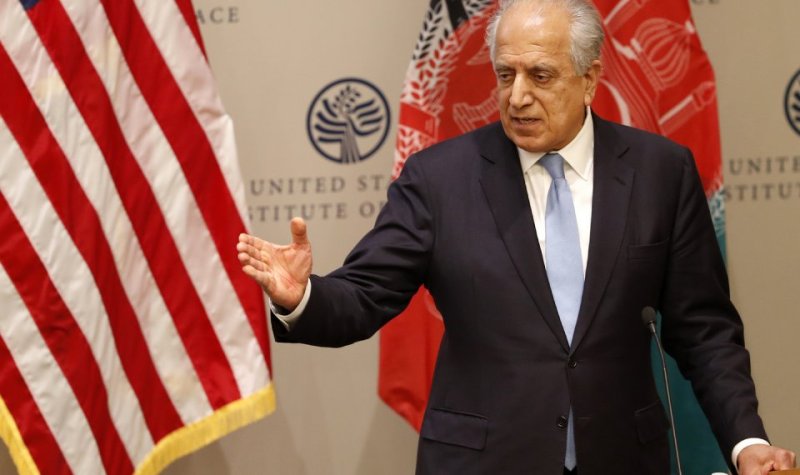Q&A: The Fall of the Turkish Lira
بسم الله الرحمن الرحيم
Answer to Question:
The Fall of the Turkish Lira
(Translated)
Question:
The Turkish lira fell in one day on 10/8/2018 by 14%, after falling by more than 21% on a continuous basis since the beginning of this year. The drop has increased after America’s imposition of tariffs on steel and aluminum imported from Turkey, in addition to the issue of the detention of the American pastor in Turkey since 2016, which America demanded his release … What are the reasons for all of this? And where is this crisis going? May Allah reward you with the good.
Answer:
In order to get a clear answer, the following matters must be studied:
First: The Lira crisis and its continuous decline at intervals:
1- Using the lira began in 1927 for almost one dollar, after the elimination of the Khilafah (Caliphate) and the elimination of its currency based on gold and silver … And then began the story of the decline of the lira since 1933; the dollar then was equivalent to two lira… The spiral fall then accelerated until one dollar was worth 1.65 million liras in 2001. The deficit in the Turkish economy peaked with the pressures of the International Monetary Fund, the pro-British government of Ecevit began to shake … and the 2002 elections took place and Erdogan and his party won and formed the government with US support. His government adopted the decision to abolish six zeros and was approved by the parliament, its implementation started as of 1/1/2005. The dollar was equal to 1.79 lira. But it has not settled for long. Since 2013, the lira has started to fall again. It has recorded a significant decline for nine months until the beginning of 2014, where it has lost 30%. It has not stopped even today. The Erdogan government has tried to limit the decline and maintain its stability, but failed. Since the beginning of the year, the lira has fallen significantly; until the middle of 2018, it lost about 21% of its value at the beginning of the year, i.e. within six months.
2- Then, on 26th of July of this year, the crisis surfaced dramatically, when both Trump and his vice president Mike Pence threatened to impose sanctions on Turkey if Brunson was not released immediately. The lira then began to decline further at the end of the month of July against the dollar to become 4.91 liras compared to 4.76 liras prior to the decision of the Central Bank of Turkey to keep the interest rate at 17.75% without an increase. “The Central Bank kept the interest rates unchanged on Tuesday contrary to the expectations predicted of its increase after the rise of inflation to the highest level in 14 years … The bank kept the repurchase rate for a week at 17.75% …the lira dropped and lost about 20% of its value since the beginning of this year to 4.91% against the dollar after the decision from being 4.7605 immediately before it…” (Source: Sky News Arabic: Tuesday July 24, 2018)
3- The announcement of the sanctions decision followed, in Trump’s tweet on Twitter, and then the Turkish lira’s fall accelerated against the dollar … To contain the crisis with Washington, Ankara quickly sent a delegation headed by the Turkish Deputy Foreign Minister on 7/8/2018 to negotiate with his US counterpart and discuss the crisis of Pastor Brunson. But negotiations between the two sides have not reached a conclusion. As soon as the Turkish delegation began the journey home on 9/8/2018, Trump poured oil onto the fire in a tweet on his Twitter account on Friday, 10/8/2018, by increasing tariffs on imports of steel and aluminum from Turkey, making aluminum import tariffs cost 20 percent and steel cost 50 percent, and this pushed the lira down to a new record high of 7.24 lira to the dollar in early trading in Asia and the Pacific. The Turkish currency has lost about 40 percent of its value since the beginning of the year. During the second week alone in August, the lira lost about 20 percent of its value against the dollar. Trump tweeted, “I have just authorized a doubling of Tariffs on Steel and Aluminum with respect to Turkey…” (https://arabi21.com, 10/08/2018; New York Times, 10/08/2018)
4- Thus, the financial crisis between America and Turkey on the surface seems to be because of the Pastor Brunson’s case, and the US President’s desire to satisfy the fundamentalist Christian sector in his electoral base just a few months before midterm congressional elections. But the truth is that the case of Pastor Brunson was used to cover the actual causes of the collapse of the Turkish lira, which is a political crisis fed by the United States to strike Europe, which we will explain, because the signs of the crisis existed even before the Turks disagreement with the Americans. The Turkish government brought the date of the elections earlier from November 2019 to June this year, in order to anticipate any aggravation of the crisis, which may affect the results of the election … Erdogan himself admitted that, “Thanks to the introduction of the election date we will prepare for the effects of a devastating economic earthquake or we will not be able to get out of this period without incurring losses.” (Turkish news page 20/4/2018). That means that the devaluation of the lira was before the issue of the pastor and before the tariffs were increased … and even so, Brunson has been imprisoned since 2016, so it makes no sense for America to impose sanctions on Turkey at this time for Brunson, especially since it is known that the US has little interest in religion and human rights…
5- The real reasons behind the steep decline of the Turkish currency is due to a number of reasons, most notably:
a- The volume of large borrowing, especially of the private sector, over the last decade… The Turkish Treasury announced in September 2017 that the total external debt of Turkey is $438 billion… and it plans to pay about 11 billion to serve the debt of about 43 billion during the year 2018: The Turkish Treasury announced in a statement issued on 31/10/2017 that it “plans to pay $10.92 billion as part of the amount of about $43.1 billion to service the debt in 2018″. “Inflation rates have recently reached higher than 10%” (Anadolu Agency 31/10/2017). Thus the alarm bells began to ring hard, until the Turkish Treasury Advisor recently announced that “Turkey’s foreign debt for the first quarter of the year as of 31/3/2018 is 466.7 billion dollars…” (Anadolu Agency 29/6/2018) Here it should be noted that an important part of this debt is due to government projects in origin but the private sector has implemented and funded them because the government of President Erdogan over the last ten years has tried to alleviate the government debt by putting these projects on the private sector, which borrows from abroad to implement them. So today the private sector bears responsibility for part of this debt, which is a political ploy so that allows the government to always boast of its little foreign debt!
b- Trade deficit between exports and imports increased to 37.5% compared to the previous year to reach 77.06 billion dollars during 2017, according to the data of the Turkish Ministry of Customs and Trade on 2/1/2018. These are paid in hard currency. The value of Turkish exports was 157.1 billion dollars while imports were 234 billion + 156 million US dollars for 2017 (Turkish TV and Radio 2/1/2018). In addition, the inflation rate announced in Turkey with official figures from “the official Turkish Statistical Office on 3/8/2018 on the inflation rate in the country reached 15.85% (Anadolu Agency 3/8/2018)”. It has increased this high for the first time since 2003 when Erdogan’s party came to power. The Central Bank’s goal was to make inflation rate at 5% to reach Europe’s standards … but it has failed as it could not reach this rate and stopped at 8% but quickly rose to 10% last year to reach today’s figure, i.e. about 16%.
c- Reducing Turkey’s economic level by the rating agencies has put pressure on the Turkish lira and has weakened confidence in the lira and in the Turkish economy. Moody’s (rating agencies) warned on 14/4/2018 of the weakness of the Turkish currency and the inflation of Turkish indebtedness, stated, “the chronic weakness the Turkish currency has a negative impact on the classification of sovereign debt and is a problem to the economy” and referred to “the low foreign exchange reserves in Turkey” (Reuters 14/4/2018) “This agency reduced its classification of Turkey from BA1 to BA2 on 13/3/2018″, which upset Erdogan who said, “Credit rating agencies are preoccupied with trying to push Turkey into a predicament, and the financial markets should not take it seriously,” (Turk Press, 13/3/2018). Standard & Poor’s credit rating agency on 2/5/2018 followed Moody’s and lowered Turkey’s classification in an unexpected step … The agency announced its decision to reduce the classification of Turkey from BB to BB-. The agency announced: “The reduction in rating is due to our concerns about the deterioration of the inflation outlook and the long-term decline in the exchange rate and volatility of the Turkish currency,” (Reuters 2/5/2018).
They were followed by Fitch credit ratings agency, which stated: “Turkey’s credit rating fell from BB+ to BB due to rising inflation, current account deficits and uncertainty in Turkey’s economic policy,” (Turk Press 14/7/2018). It is known that these credit rating agencies play a role in influencing the economic situation, they hide the economic problems of a country and do not highlight them as they have done with Turkey for many years, or expose them and exaggerate them as they do with Turkey. Now to serve political purposes, making creditors fear lending to Turkey … and demand repayment of the debt … increasing the demand for collecting the hard currency from the market to repay the debt, and the lira decreases.
Secondly: Here, we must question: since the lira crisis was for a long time … So why pressure it in this period with the crisis of the pastor and the increasing of tariffs? And why highlight the decline of the lira in this accelerated way, making it look like there is tension between Turkey and America to strike the lira? Which is dangerous and it is as a declaration of war, requiring at least cutting ties or to withdraw from NATO … etc., but none of this happened! So what is the truth behind this? To clarify the truth, we mention the following:
1- Trump’s administration has always adopted a strong dollar rhetoric against influential global currency, especially the euro, taking advantage of lower interest rates in the euro zone; it raised its interest rates to pay capital to the migration from Europe to America to get high interest rates … America expected that the transfer of funds would reduce the euro against the dollar, but the result was not as they wanted, the euro continued to increase against the dollar. The European Central Bank began effective plans to tighten its monetary policy and reduce or stop the purchase of bonds in the so-called monetary easing, which led to the transfer of capital from the United States to Europe and Asia in pursuit of better returns on investment. When Trump failed, he reduced imports and increased exports to adjust the trade balance in his favor, to strengthen the dollar, and he began to charge for some incoming goods. “Thus, US Secretary of Commerce Wilbur Ross announced Thursday 31/5/2018 that his country will impose on Friday (tomorrow) high customs duties on steel and aluminum importers from the European Union, China, Mexico and Canada.” (www.dw.com, 31/5/2018)
2- But all these policies have not achieved Trump’s goal of strengthening the dollar against the euro … He seems to have found his wish by highlighting the decline of the Turkish lira by adding more pressure on it, and then struck panic in the European financial market because of the intensity of financial transactions between Europe and Turkey, the majority of investments in Turkey are from Europe, and have increased in 2017 by 42% and the volume of trade exchange with Turkey is the largest with Europe, which reached 160 billion dollars in 2017 and tends to be in favor of the latter. The two parties began to update the customs union agreement signed in 1995 aiming to raise trade exchange to 200 billion dollars in a year and a half, and to reach 500 billion in five years as announced by Turkish Economy Minister Nihat Zeybekci (Middle East 29/9/2017). While the volume of trade exchange between Turkey and America is $18.7 billion dollars, with an increase of US exports to Turkey by 7.2 in 11 months during the Trump’s time (Anadolu Agency 21/1/2018), and therefore any tremor in the Turkish economy and the Turkish lira will cause a strong panic in the European economy. This financial panic as Trump predicts will be a near fatal blow to the euro.
3- The European market has already been affected by the decline of the Turkish lira:
a- The European Central Bank is increasingly concerned about the exposure of Euro Zone banks to Turkey, especially France’s bank BNP Paribas, Spanish bank BPA and Italy’s UniCredit. These three banks have major operations in Turkey, and the shares of the three banks fell by about 3%. Europe has been affected by what is happening in Turkey because of its investments there and the debts that it has on Turkey and the volume of trade exchange between the two parties.
b- According to the latest figures from the Bank for International Settlements (BIS), European banks’ debts to Turkey amount to 224 billion dollars (about 200 billion euros), most of them to Spanish banks, which fear their exposure to a crisis in Turkey. Shares of some of these European Banks began to fall, with the lira collapsing by between 10 and 20 percent because of its debt in Turkey. (Sky News 31/5/2018)
c- There is another troubling aspect of Turkish debt, the inability to service debt … Turkish investors owe Spanish banks $82.3 billion, French banks $38.4 billion, and Italian loans are $17 billion in a mix of domestic and foreign currencies. From here the alarms are sounded in Europe. The Spanish bank BBVA, the Italian UniCredit and the French company BNP Paribas have lost the value of their shares: https://www.ft.com/content/51311230-9be7-11e8-9702-5946bae86e6d
The decline in the value of the lira also raises the possibility of Turkey defaulting on its loans, resulting in a large-scale impact on Europe.
d- There were reports indicating that the Turkish large companies are heavily in debt, with more than $220 billion, they have applied to the government for protection from creditors after the falling of the lira. Among these companies, Doğuş Group run by billionaire Frit Shahenk, which called banks to restructure the debt in foreign currency worth billions of dollars. According to some estimates, the total amount of debt required to restructure is about $20 billion.
e- Industry and the Federation of Chambers of Commerce in Germany announced that about 6500 German companies in Turkey have been affected by the uncertainty hanging over the state of the Turkish economy, pointing out that the German companies began to dismiss the plan of pumping new investments in the Turkish market. (www.lebanon24.com13/8/2018)
Thirdly, thus highlighting the lira crisis in this accelerated decline as a result of America’s actions was to create a major shock in the European economy and then strike the euro and make it fall against the dollar. Although the American actions to pressure the lira will affect the lives of people in Turkey, Trump does not care about this. Although we can see Trump’s ruthlessness to strike any currency that competes with the dollar according to the cowboy mentality that runs in his blood, but what is deplorable is that Erdogan did not realize that, and was surprised at what Trump did and wondered how can Trump do this with an ally for a priest? “It is wrong to dare and try to subjugate Turkey by threats for a priest,” he said in front of a rally in the Black Sea town of Unye. “I speak to those in America again: shame on you, you exchange your strategic NATO ally for a pastor” (Al-Anba website, Sunday 12/8/2018). Then he says to Trump pleading and with sorrow that Turkey has provided many services to America and fought for its sake!
In an article entitled: “Erdogan: How Turkey Sees the Crisis With the U.S.” published in The New York Times on 10/8/2018, Erdogan says: “…For the past six decades, Turkey and the United States have been strategic partners and NATO allies… Our two countries stood shoulder to shoulder against common challenges during the Cold War and in its aftermath… Over the years, Turkey rushed to America’s help whenever necessary. Our military servicemen and servicewomen shed blood together in Korea. In 1962, the Kennedy administration was able to get the Soviets to remove missiles from Cuba by removing Jupiter missiles from Italy and Turkey. In the wake of the Sept. 11 terror attacks, when Washington counted on its friends and allies to strike back against evil, we sent our troops to Afghanistan to help accomplish the NATO mission there.” Thus, Erdogan shows his allegiance to America, the enemy of Islam and Muslims, and it rewards him with a lack of appreciation.
Fourth: The fate of this crisis between America and Turkey and the problem of the Turkish lira, what we expect is as follows:
1- The purpose of the US pressure on the Turkish lira, which led to the acceleration of the lira’s decline is to create panic in Europe to undermine the European economy and then the fall of the euro, because of the intensity of financial and economic relations between Europe and Turkey, and this has already led the Euro fall against the dollar: “… The euro was badly hit on Friday after the Financial Times quoted two sources as saying the ECB was concerned about the banks of Spain, Italy and France and their exposure to Turkey, and today the euro touched 1.13655 dollars, the lowest level against the US currency since July (Reuters, Monday, August 13, 2018). If Trump hits the euro in a way that satisfies his arrogance, he may re-support the lira by upsetting the
ratings institutions’ balance as he did when Erdogan came in 2003, when the lira was low and the economy was turbulent during Ecevit’s time, and then created a bubble of rising economy with successive loans influenced by America and its agents and raising the rating of Turkey … and thus was the promotion of the growing economy in Turkey, although it is based on loans and riba (interest)!
2- As for the tariff effects, it is not significant; Turkey’s exports to the United States are slightly over $1 billion (Al-Youm As-Sabi’, 2/8/2018), which is not effective in a country whose exports in 2017 were more than $157 billion (Bawabat Al-Sharq 2/1/2018), as if the intention was to create a turbulent atmosphere in the Turkish economy and then a black atmosphere on the Turkish lira that are echoed or rather have resonance in the European economy and the euro, because of the intensity of economic and financial transactions between Turkey and Europe and so it was …
3- Regarding the pastor, he has been detained for about two years and things were calm between Turkey and America, but Trump highlighted it now for the elections, and also to create an atmosphere of tension between Turkey and America that help influence the financial markets, it is a supplementary element in this uproar and not a major one. Therefore when the goal of the euro is achieved which is expected not to go on for long… the pastor will be handed over to America and America may or may not save Erdogan’s face!
4- The suffering of the Turkish people as a result of the collapse of the lira, and the rise in prices and the difficulty of living … This is of no concern to Trump or those in the orbit of Trump and the agents. Perhaps these followers and supporters will learn the lesson or be wiser to the fact that they have no weight and value to their masters, if the interests of these masters requires that they should do whatever they want with them, even if this is an insult to those who follow or bring shame to them who are used to humiliation will not be affected by insults.
In conclusion:
– The crisis that Trump made of the customs duties, the subject of the pastor, the reduction of the rating agencies of Turkey, the disclosure of Turkey’s debts, etc., and what happened to the lira of the striking decline, this crisis is intended to create panic in Europe to undermine the European economy and then the decline of the euro, due to the intensity of financial and economic transactions between Europe and Turkey, which has actually led to the devaluation of the euro against the dollar …
– And since Erdogan follows the orbit of America, it is not expected that this crisis will be prolonged, but if Trump is sufficed with the decline of the euro, even if not a knockout as he had hoped, this may not be far … Then, Trump, just as he began the crisis he will end it together with or without saving Erdogan’s face. And then the pastor will be released and the tariffs will be canceled or reduced. The rating agencies will adjust the classification of Turkey after the debt is postponed with new loans. Thus, the price of the lira will improve even if it is no longer as it was before the crisis. Trump and Erdogan will go back to their friendly talk as if nothing has happened!! And so on … If the interests of their masters required insulting them, this will happen, but if their removal was required, it will happen, which did happen to the supporters before them in the past, do they not remember?
﴿إِنَّ فِي ذَلِكَ لَذِكْرَى لِمَنْ كَانَ لَهُ قَلْبٌ أَوْ أَلْقَى السَّمْعَ وَهُوَ شَهِيدٌ﴾
“Indeed in that is a reminder for whoever has a heart or who listens while he is present [in mind].” [Qaf: 37]
12 Dhul Hijjah 1439 AH
23/8/2018 CE





